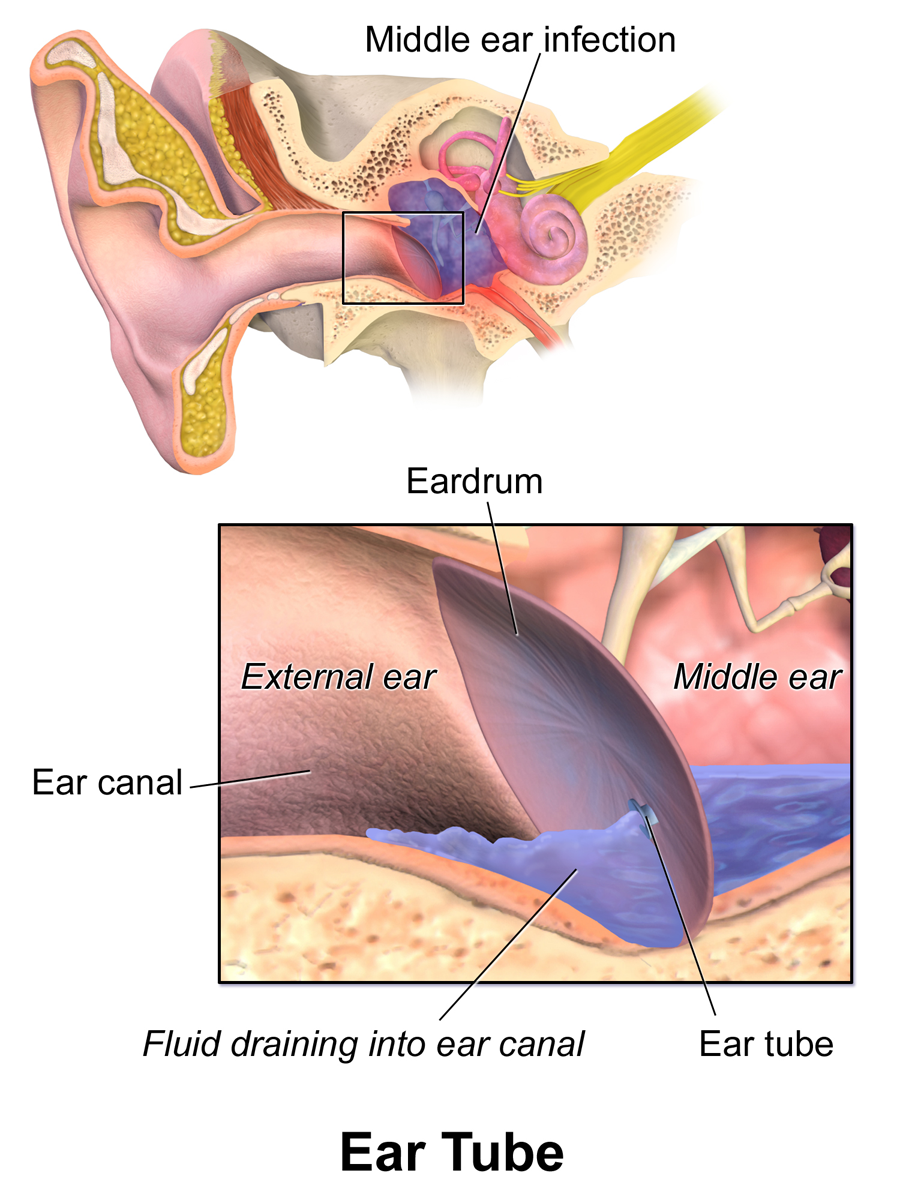
Ear Tubes
Ear tubes are one of the most common outpatient surgeries done in the united states, one study estimating approximately 670,000 done annually in the United States alone. They are most commonly performed on children due to persistent middle ear fluid or recurrent ear infections. Occasionally an adult will develop persistent ear fluid which will require placement of ear tubes as well, though adults are usually able to tolerate placement of the tubes in the clinic without the need for anesthesia.Chronic Otitis Media With Effusion
Chronic otitis media with effusion is very commonly described as a persistent ear infection; however, this is a bit of a misnomer. The fluid is very typically sterile, though it is very fertile and the patient with this condition is at risk for developing an ear infection in this fertile fluid. Usually, the only symptom is hearing loss and a clogged sensation in that ear, though a mild degree of imbalance can also be present on questioning. Modern evidence-supported guidelines have shifted somewhat in their initial recommendations in this condition. Medical research has shown us that most children with this condition have only 28dB conductive hearing loss related to this fluid which is a very mild degree of hearing loss. This allows most children to simply observe this fluid with regular checks every 3 months or so to assess for stability of hearing and physical changes in the ear drum. Implicit in this management option however is the risk that the frequency of ear infections diagnosed and requiring treatment in this group will not change. This would require continued treatment with oral antibiotics on roughly the same schedule as prior to electing observation. Thus, while guidelines do not propose tubes as primary treatment, they could be used electively to decrease absenteeism, oral antibiotic exposure, and overall pain due to the recurrent infections in this patient sub-group. Should parents elect conservative observation in this group, a age-appropriate hearing test should be performed and tubes should be pursued in children with a hearing level below 30dB. This hearing test should then be repeated every 6 months through the observation period while the fluid is still present. Interestingly, studies have shown that out of children with persistent fluid for 3 months after the infection, only 10% are expected to improve in the following 12 months.Recurrent Acute Otitis Media
Recurrent Acute Otitis Media is a condition defined as 3 ear infections within 6 months or 4 within 12 months with otherwise normal appearing ears in between episodes. There is less data available for guidance in this specific situation, though the repeated antibiotic exposures required in this group are concerning in the modern era of antibiotic resistance. One of the main benefits or ear tube placement is the requirement to change to topicl treatments for further episodes of otitis media. Also, it is much more obvious to the caregivers when the child has an ear infection as fluid will drain out of an ear with an ear tube. An additional benefit is that there is not usually pain associated with these new ear infections. This is due to the fact that the pressure against the ear drum is what causes most of the pain in an ear infection, and while a tube is in place, pressure simply cannot build behind the eardrum anymore. It equilibrates across the ear drum by either air going in through the tube, or mucous coming out.Dr York's Involvement in Research
Dr York is one of only two doctors in the area that work with Tusker Medical. Through this study, pediatric patients can elect to undergo their ear tube surgery in the clinic with a device that makes the cut and delivers the tube in 10 milliseconds. This is done after numbing the eardrum so that the child doesn't feel any pain during the procedure. If you are interested in avoiding the operating room and/or avoiding anesthesia, please be sure to ask Dr York about the Tusker ear tube study. Enrollment is limited.If you or your child have had multiple ear infections or persistent ear fluid, make an appointment with Dr York today, CLICK HERE!
For Dr York's clinical handout discussing ear tubes, CLICK HERE!